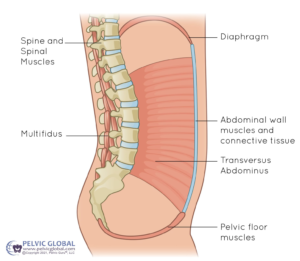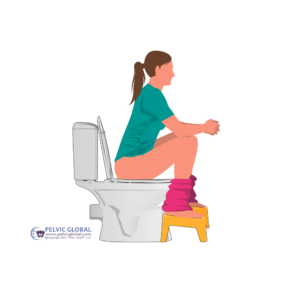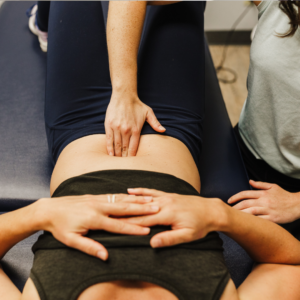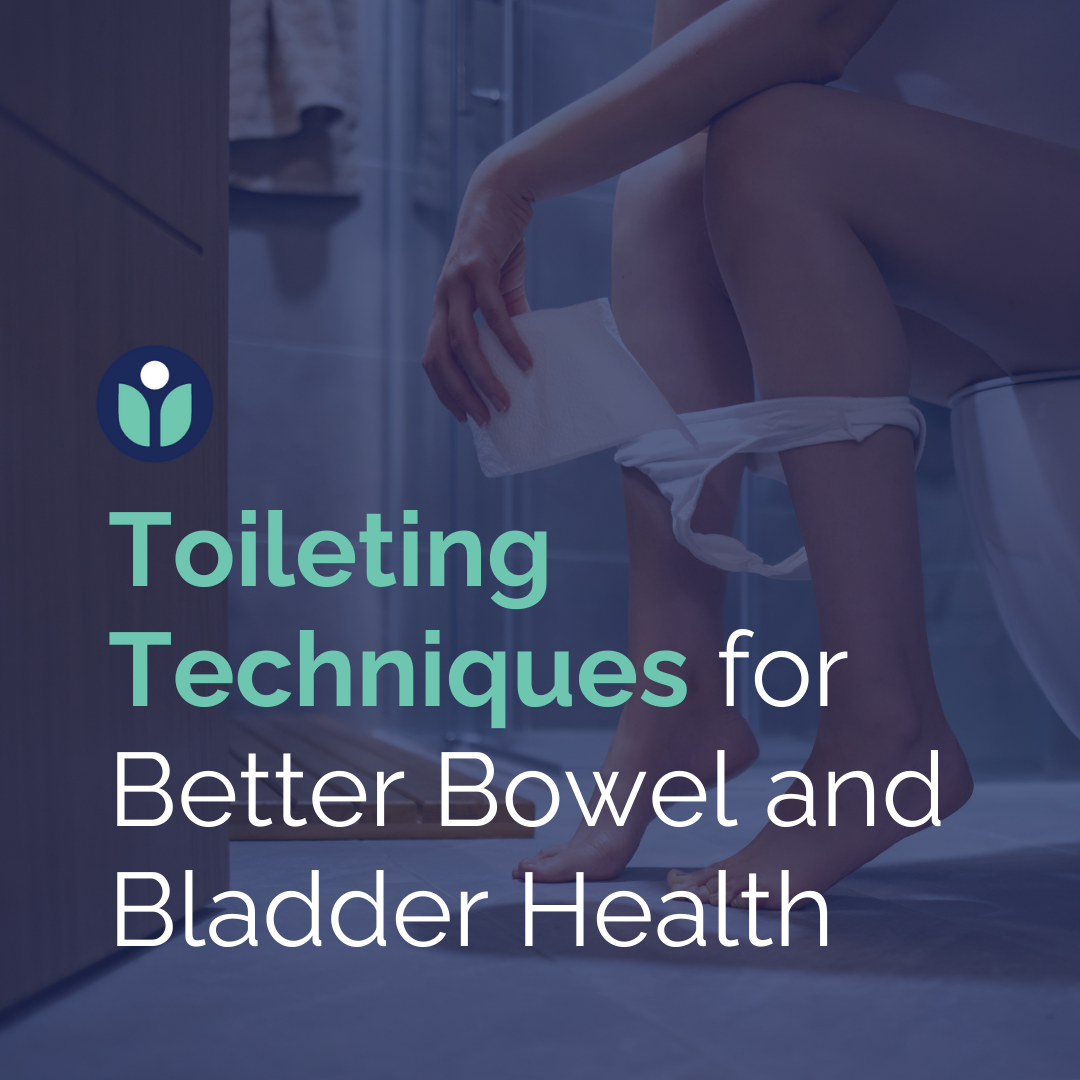Toileting Techniques for Better Bowel and Bladder Health
Toileting Techniques for Better Bowel and Bladder Health
When it comes to bladder and bowel health, small changes in how you approach everyday activities can make a big difference. One often overlooked factor is the way we sit on the toilet. Believe it or not, the posture you adopt during bowel movements or urination can directly impact how well your body empties and how much strain it puts on your pelvic floor. With a few simple adjustments, you can reduce unnecessary stress and make your bathroom routine more effective and comfortable.

Your pelvic floor doesn’t work alone! This diagram from an abdominal view illustrates how the diaphragm and other key structures work together to support your core and overall health.
Image used with permission from Pelvic Guru®, LLC as a member of the Global Pelvic Health Alliance Membership (GPHAM).
Using good toilet posture, breathing techniques, and emptying strategies can help create more complete, less strenuous, and healthier bowel and bladder emptying. These practices not only reduce strain but can also help prevent long-term issues like constipation, urinary retention, or pelvic floor dysfunction.
Let’s dive into how something as simple as toilet posture can help make those moments easier and more efficient, starting with one of the best (and yes, easiest) things you can do for your bowel health: sitting properly!
Toilet Posture
First off, go buy a Squatty Potty! Just kidding—while they are a great investment for your bowel health (and you should put one in your Amazon cart ASAP), you don’t have to have one. A simple stool, bench, or even a thick book can also work wonders in helping raise your knees above your hips. This position mimics a squat, which aligns your body more naturally for elimination, allowing for a more complete and effortless release.
Once seated, lean forward slightly, resting your elbows on your thighs to support the relaxation of your pelvic floor muscles. See the image below for an example of proper toilet posture:

Toilet posture matters! Proper positioning can help reduce strain and support healthy bowel movements, making it easier on your pelvic floor and digestive system. Image used with permission from Pelvic Guru®, LLC as a member of the Global Pelvic Health Alliance Membership (GPHAM).
Why is this important?
Well, the angle your body creates when using the restroom directly affects how well the pelvic floor muscles can relax! When the knees are above the hips, the anal canal aligns in a way that promotes easier bowel movements, while the pelvic floor muscles can engage and disengage properly during urination. Without this posture, the pelvic floor may remain tense, causing strain and discomfort.
Emptying Strategy
Relax and soften the muscles around your anus (for bowel movement) or urethra (for urination). Begin by taking a deep breath into your waist, letting your lower belly expand as if you’ve swallowed a balloon. This relaxation allows the pelvic floor to lower, facilitating the process. As you exhale, gently pull your belly button up and in, creating a mild increase in abdominal pressure to help release stool and urine.

Did you know your diaphragm and pelvic floor work together? This diagram highlights how deep belly breathing engages both to promote relaxation and pelvic health. The image was used with permission from Pelvic Guru®, LLC, as a member of the Global Pelvic Health Alliance Membership (GPHAM).
While it might sound counterintuitive, it’s crucial that you do NOT kegel, bear down, strain, or hold your breath during the process. Straining can overtax the pelvic floor muscles and lead to long-term issues like pelvic organ prolapse or incontinence. Instead, aim for a gentle, controlled release.
Why does breathing matter?
Deep abdominal breathing not only helps engage the correct muscles but also reduces the likelihood of holding unnecessary tension in the pelvic floor. Exhalation also helps coordinate the abdominal muscles, which assist in the release of waste. In fact, you may find that certain techniques, such as blowing out candles, gently blowing through a straw, or even making a low grunt, help your body naturally move stool or urine. Experiment with these techniques to discover what works best for you!
Take Your Time
Avoid rushing the process! Taking your time when on the toilet is essential.
The act of urinating or defecating should never feel hurried or forced. It’s important to listen to your body and wait for the signal that you’re ready to empty. If you’ve been sitting for longer than five minutes and nothing has happened, get up and try again later, but only when the urge returns.
Why is patience key?
The act of rushing can increase tension in the pelvic floor and make it more difficult to fully empty the bladder or bowels. The body needs time to relax, and stressing about it can create more problems.
Still Not Feeling Empty?
Don’t lose hope! Here are a few more techniques to try:
- Rocking Side-to-Side or Front-to-Back: Gently rocking your hips while seated can help move stool or urine along the pelvic floor, encouraging a complete release.
- Applying Pressure: Lightly press around your perineum or apply inward pressure above your pubic bone. These techniques can help activate the muscles involved in elimination and encourage a more complete emptying.
Helping your body work efficiently during bowel movements! This technique of gently applying pressure to the abdomen can support muscle activation for optimal emptying. Image used with permission from Pelvic Guru®, LLC as a member of the Global Pelvic Health Alliance Membership (GPHAM)
How do these work?
These small shifts in technique encourage the body to release tension, which is often the cause of incomplete emptying. Sometimes, gentle pressure or rocking can stimulate the release that your body is hesitant to initiate on its own.
Once you feel like you’ve finished, stand up and sit back down to try emptying again—using all of the above techniques. However, it’s important to limit this to one attempt, as excessive posturing or pushing can strain the pelvic floor and exacerbate symptoms.
When to Seek Help
If you’re still encountering issues with bowel or bladder emptying, it may be time to reach out for professional help. Sometimes, incomplete emptying can indicate underlying abdominal, pelvic floor, bladder, or bowel dysfunction. It’s essential to have a pelvic health therapist or your physician assess the situation to ensure there aren’t more serious issues at play.
We understand how discouraging, frustrating, and downright annoying these issues can be. It’s important to know that you are not alone—and you don’t have to live like this! Relief is possible, and taking the first step toward better bladder and bowel health is empowering. You don’t have to continue dealing with these challenges on your own.

Sometimes, a gentle touch is all it takes! This pelvic floor therapist is performing a bowel massage to help encourage healthy digestion and alleviate constipation.
Pelvic floor therapists are experts at identifying dysfunctions that could be affecting your ability to fully empty. They can provide specialized exercises and strategies tailored to your needs, as well as teach you how to best support your pelvic health moving forward.
Ready to make the leap? Click the link below to schedule your FREE 15-minute phone consultation. During this call, you’ll have the opportunity to speak with one of our amazing admin team members, get all your questions answered, and discuss your symptoms. We’ll also help you get set up for your initial consultation!
https://link.srvcsndr.com/widget/booking/jjZlhXoKFYfoWsP6lmDY
If you have questions or need assistance, don’t hesitate to reach out to us—contact us today, and let’s start working toward a healthier, more comfortable you.
Contact Us
UpLift Physical Therapy Website
Phone: 210-468-7398
Follow us on social media: Instagram @upliftptp


